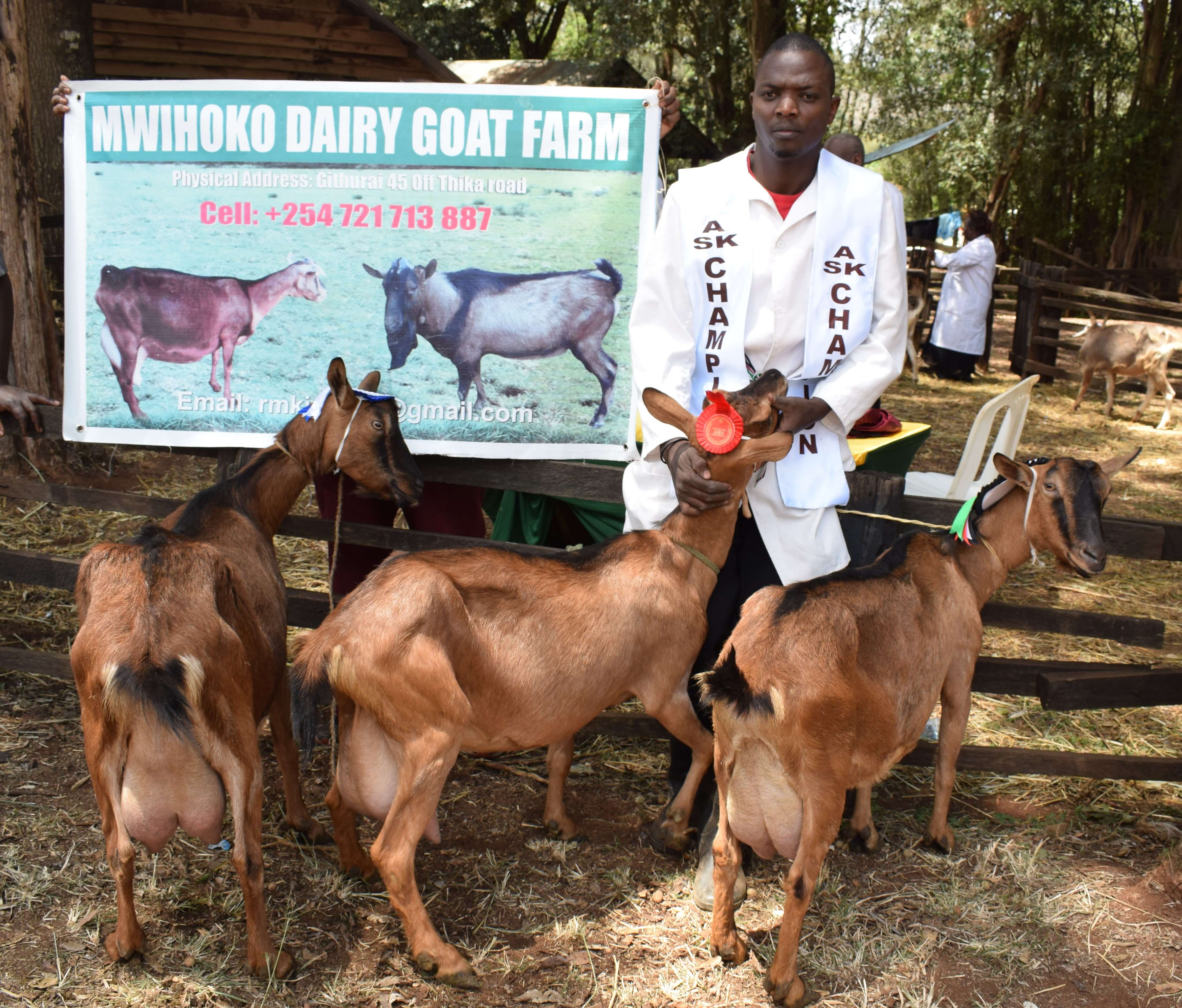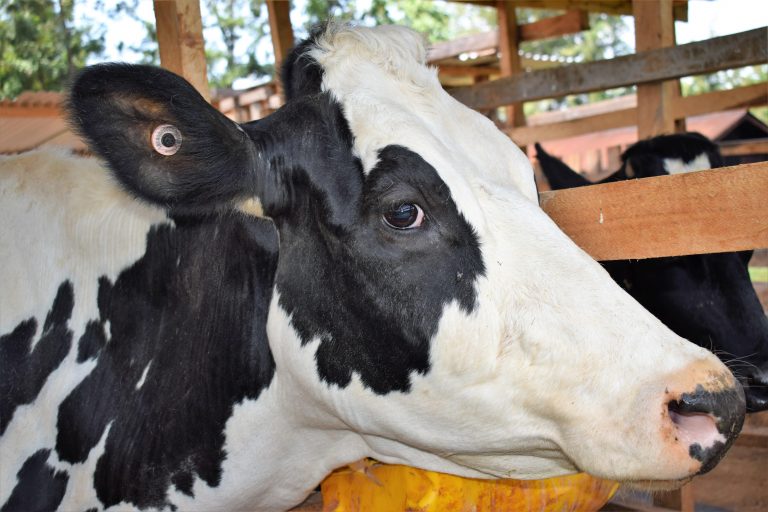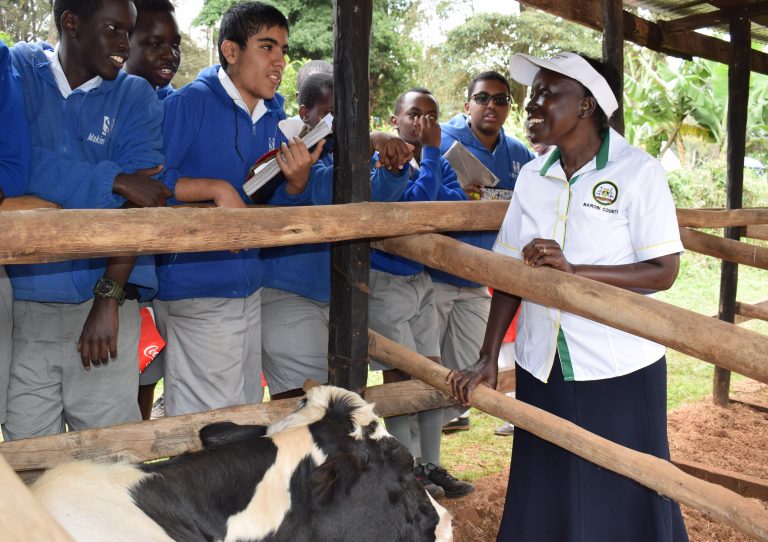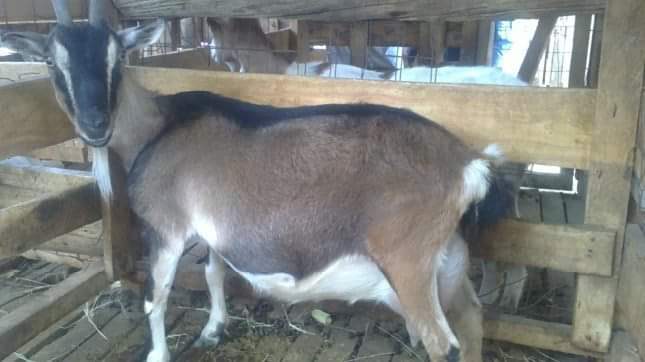Kilimo News catches up with Robert Macharia at the Nairobi Agricultural Trade Fair popularly known as Nairobi show preparing his dairy goats for a parade. They have been declared the best dairy goats in production and being well kept and he agrees to a quick interview. He usually attends Nakuru, Mombasa and Nairobi agricultural shows as they have a high turnout according to him.
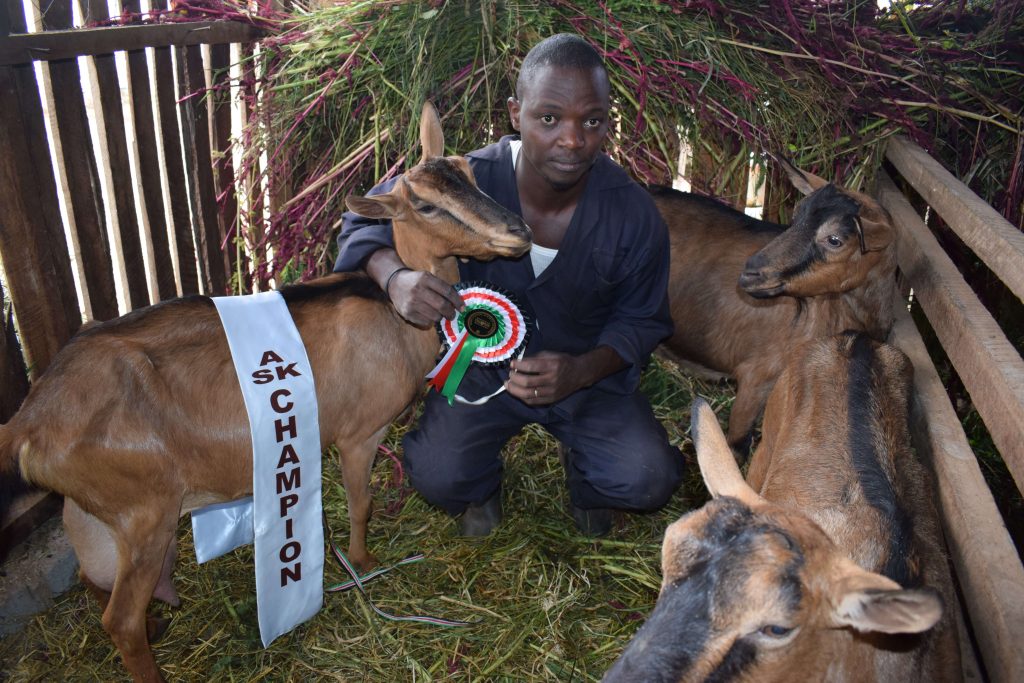
Born in Embu, Macharia practices his dairy goat farming at Mwihoko in Kiambu County where he has a plot measuring 40 x 60 feet. “I practice urban farming and so it’s on this plot where I live with my family and rear my 38 dairy goats. It is all about planning,” says Macharia. He started with two goats in 2011 which he says he kept as a source of milk for his family. His friends started asking for goat milk and he decided to increase his herd and presently he has 38 German Alpine dairy goats. “I prefer the German Alpine because it is a hardy goat and it can survive anywhere. If handled well it produces more milk and it sustains me with the quantity of milk I want,” adds Macharia. The goats produce 28 -33 litres of milk daily which he sells locally at 200 Kshs. a litre. Most of his clients are people on doctors’ instructions to take goat milk as it is medicinal. The rest are people who know the benefits of goat milk. He adds that he can’t meet the demand and promises to connect other farmers to clients.
He also earns a good amount by selling the goats whose price is determined by age. A 2-6 months old dairy goat fetches Kshs. 15,000 while a 6-10 months old fetches Kshs. 20,000. You have to part with Kshs. 25,000 to get 10 months to a one-year-old dairy goat from Macharia. For a 1 year – 14 months old you need Kshs. 30,000 while a goat in the first lactation goes for Kshs. 40,000. The most expensive one is a goat in its third lactation period which fetches Kshs. 50,000 and above.
Macharia feeds the goats with hay which he says is easier for urban farming. “Green matter is hard to get in urban areas and also can’t be stored for long. Hay can be kept for a long time and currently, I have enough to last for six months. I only supplement it with dairy meal and make sure there is enough clean water,” he says. He, however, cites a myriad of challenges among them lack of enough qualified and trusted veterinary officers. He says he has encountered veterinary officers who appear like they are not sure of what they are doing which has led to a loss of some goats. Another challenge according to Macharia is the poor quality of animal feeds in the market which he says lowers production. “I urge the concerned parties to ensure we have quality animal feeds as there is a big problem. In the sector. I have tried switching from one brand to another but I haven’t found one that I can completely recommend,” he adds.

Macharia, however, doesn’t regret leaving employment in 2016 to concentrate on his dairy goat venture. He worked as a river with sports betting company Sportpesa before he decided to concentrate with his 11 dairy goats at the time. “I have mentored many youths to take up dairy goat farming as a business and it is encouraging to see them change their perception about agriculture. I also get a lot of satisfaction when a patient taking goat milk under doctor’s instructions gives me positive feedback,” says Macharia.


